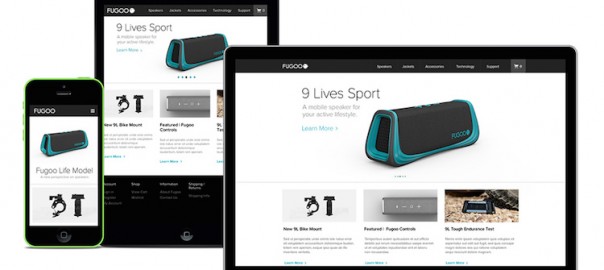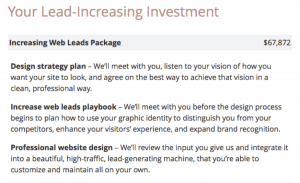
Online companies collect large amounts of customer data and it’s often tragically underutilized. User data can be used to personalize communication with your customers and prospects, 74 percent of whom get frustrated when content isn’t personalized to the interests they have already supplied to an online company.
For ecommerce companies in particular, a more personalized shopping experience can help you form stronger bonds with both loyal and potential customers alike, increasing customer acquisition and lifetime value. After all, wouldn’t you prefer to buy from someone who knows your name rather than addressing you as “Valued Customer”?
In our current digital age, customer loyalty often relies on company proof of care and consideration. Addressing your customers by their name is only the first of many steps you can take to increase retention and thus revenue. Below are a few easy ways to create a fun and personable ecommerce experience for your customers.
Mobile Responsiveness
Mobile devices now account for almost 50 percent of ecommerce sales and almost 45 percent of ecommerce browsing is done via mobile technology (i.e. a smartphone or tablet). In all, if you are not optimizing your site for mobile, you are essentially cutting your revenue potential in half.
Beyond simply being responsive, however, your site must also be user-friendly on mobile. This means making checkout experiences as convenient as possible, minimizing the amount of information a user needs to fill out while allowing ample space for the user to do so. Remember, smartphone users are using their fingers on touchscreens to move throughout a site or page. Make sure buttons and forms are big enough that their fingers will properly click the desired action.
Take a look at ecommerce store Fugoo’s site, for example. See how the site design alters slightly depending on screensize in order to optimize the experience for the end user.

The most efficient way to do this is to invest in a responsive site design. You can also use a mobile-dedicated site as well, though you will need to create different site experiences for all screen sizes. And, remember, screen sizes change about as often as a new smartphone is released.
Currency And Localization
It’s a global marketplace out there. Make it easy for international customers to buy. Create smart rules to set the default currency to the viewer’s IP address, but make it easy for them to change it if they want. You can also feature special promotional offers, or different products, in different countries using smart rules.
Take Topshop, for example, which sets the default currency and language based on the viewer’s IP address. Better yet, the site alerts users to how the currency is being configured.

The currency and language choice is prominently displayed, and viewers have the option to change it as necessary.
Name Personalization
Using someone’s name helps to make a more personal connection. Although personalizing emails is common, many companies forget to use it elsewhere — e.g. on landing pages and CTAs. In fact, you don’t even have to go so far as using someone’s name. Instead, personalize the message as though the customer were writing it for him or herself.
See below how Criquet uses first person pronouns to personalize the site experience.

Hint: double check the HTML code to ensure that the person’s name appears correctly. Nothing will lose your customers quicker than misspelling their name.
Also, remember to use the right tone for your persona. Due to the casual atmosphere of the internet, most people are generally receptive to a more friendly and personal tone. That said, rework your tone to address your audience. Friendly and personal might not work in your market, or with your persona. A/B test your emails and verbiage to get a good sense of your audience’s preferred rhetoric. The emails with the higher click-thru rates are likely the ones with the preferred tone.
Persona-Based Personalization
Buyer personas are a representation of your ideal buyer. If you haven’t created buyer personas for your business, now’s the time to get on that.
Create content that appeals to each of your audience personas (keep in mind that your store may only have one persona). Use the information you’ve collected through purchase history and website activity. Gently steer each persona along the path to a purchase by offering them more information about the products they looked at, as well as similar or related products.
For example, U.S. Patriot Tactical made their homepage “smart” based on personas and serves a different homepage based on the interests of their users. To collect the data needed in order to do this, U.S. Patriot Tactical encourages those who create an account to give additional information about themselves in order to receive a more personalized experience.

This is a great idea, but be sure you are actively using the customer data to create a personalized experience, rather than promising to do so and not fulfilling it.
Action-Based Personalization
Action-based personalization is changing what a customer sees on your website, or in an email, or on her shopping cart page, based on her actions. These include site customizations and recommendations such as:
- “Customers who bought this also viewed/bought”
- “Recommendations for you”
- “Here are some relevant articles for you”
- “Latest [recipes/books/offers/articles/products] you might be interested in”
- The ability to create and add to a wish list or “buy later” list
- “Remind me to buy [this product] on [date]” capability, which let’s people set reminders for special events such as birthdays, anniversaries, etc.
- Automatically move abandoned shopping cart items into a wish list
These customizations and recommendations can all be based on pages the customer has visited, products they’ve purchased, products they’ve abandoned or removed from their shopping cart, their shipping address or more. Use the data you collect on your site to provide a private shopping concierge for each customer. This will increase customer lifetime value and prove out your stance as a customer-centric brand.
Feel free to even call out the benefits of creating an account for your users to help encourage sign ups. See how online store Rock Revival encourages shoppers to create an account in order to access additional site features.

Personalization Makes Relationship Building Easy
It’s difficult for companies to truly connect with their customers on a personal level, but taking the time to tailor individual customer ecommerce experiences can go a long way to creating lifetime value. Personalization makes customers feel special. It also increases the convenience of shopping with you over your competitors. You’ll win increased repeat customers as well as word-of-mouth marketing, both of which will help to scale your brand.
(251)
Report Post



